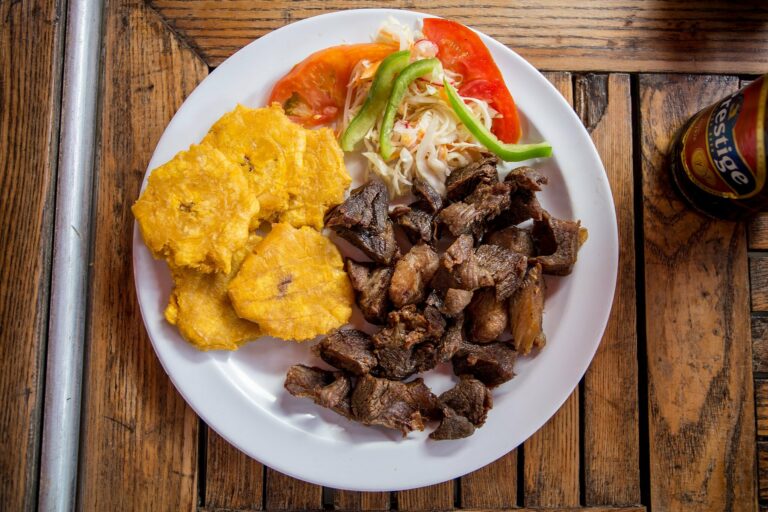Introduction: Haiti’s Culinary Traditions
Haitian cuisine is a blend of African, French, and indigenous influences. It is known for its bold flavors, hearty stews, and use of tropical ingredients like plantains, yams, and coconut. Haitian cuisine is an essential part of Haitian culture and plays a significant role in social gatherings and celebrations.
The Arrival of the Spanish in Haiti
The Spanish arrived in Haiti in 1492, led by Christopher Columbus, and named the island La Isla Española. They brought with them a range of new ingredients like tomatoes, peppers, and beans, which would later become staples in Haitian cuisine. The Spanish also introduced new cooking techniques and spices to the island, which would influence Haitian food for generations to come.
Spanish Ingredients in Haitian Cuisine
The Spanish introduced several ingredients that have become common in Haitian dishes, including beans, tomatoes, and peppers. These ingredients are used in many Haitian stews, like the popular dish, “legume,” which consists of mixed vegetables and meat cooked in a tomato-based sauce. The Spanish also introduced the use of olive oil, which is commonly used in Haitian cooking today.
Spanish Influence in Haitian Cooking Techniques
The Spanish introduced several cooking techniques that have influenced Haitian cuisine. One of the most significant is the use of a mortar and pestle to grind spices and herbs. This technique is used to make “epis,” a Haitian seasoning base that is added to many dishes. The Spanish also introduced the use of a “cazuela,” a type of clay pot used for cooking stews and soups.
Spanish-Inspired Haitian Dishes
Some Haitian dishes have a clear Spanish influence. One example is “sopa de mondongo,” a soup made with tripe, vegetables, and spices that is similar to the Spanish “callos.” “Arroz con gandules,” a rice dish made with pigeon peas, is another dish with Spanish roots that is popular in Haiti. Haitian empanadas, called “pate,” are also similar to the Spanish empanadas.
Conclusion: The Legacy of Spanish Influence in Haitian Cuisine
Overall, the Spanish had a significant impact on Haitian cuisine. They introduced new ingredients, cooking techniques, and dishes that have become a part of the Haitian culinary tradition. Haitian cuisine continues to evolve and incorporate new influences, but the legacy of Spanish influence can still be tasted in many Haitian dishes today.

